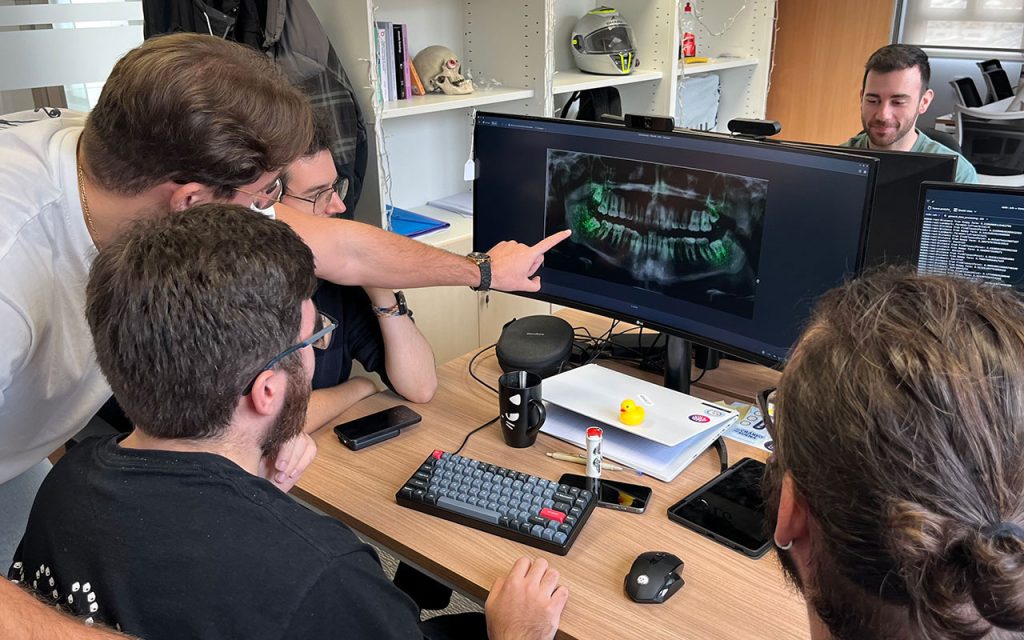
IDENTIFICACIÓN HUMANA
Estimación legal de la edad en menores
PRODUCTO
Uno de los mayores desafíos a los que se enfrentan los Gobiernos en las fronteras a nivel mundial es determinar la edad legal de los menores migrantes. En este contexto, existe una necesidad crítica de metodologías objetivas, precisas y reproducibles para garantizar un proceso confiable que respete los derechos de los menores.
Como parte de un proyecto de la UE, Panacea ha desarrollado un método robusto basado en IA para estimar la edad legal de los menores y ayudar a los expertos forenses en su proceso de toma de decisiones. Este método aprovecha las ortopantomografías (radiografías dentales panorámicas) para proporcionar estimaciones de edad precisas y confiables.
VIDEOS
OTRAS REFERENCIAS
PUBLICACIONES CIENTÍFICAS
J. Venema, S. De Luca, P. Mesejo, O. Ibáñez. Trustworthy AI-based legal age estimation using orthopantomographs. Submitted to Engineering Applications of Artificial Intelligence in 21/10/2024.
Práxedes Martínez, Andrea Valsecchi, Javier Irurita, Pablo Mesejo. Information fusion for subadult age estimation from deciduous teeth using machine learning techniques. American Journal of Biological Anthropology, e24912. https://doi.org/10.1002/ajpa.24912
A. Demirjian, H. Goldstein, y J. M. Tanner, «A New System of Dental Age Assessment», Hum. Biol., vol. 45, n.o 2, pp. 211-227, 1973.
R. Cameriere, L. Ferrante, y M. Cingolani, «Age estimation in children by measurement of open apices in teeth», Int. J. Legal Med., vol. 120, n.o 1, pp. 49-52, ene. 2006, doi: 10.1007/s00414-005-0047-9 .
H. H. Mincer, E. F. Harris, y H. E. Berryman, «The A.B.F.O. study of third molar development and its use as an estimator of chronological age», J. Forensic Sci., vol. 38, n.o 2, pp. 379-390, mar. 1993.
A. Uys, H. Bernitz, S. Pretorius, y M. Steyn, «Estimating age and the probability of being at least 18 years of age using third molars: a comparison between Black and White individuals living in South Africa», Int. J. Legal Med., vol. 132, n.o 5, pp. 1437-1446, sep. 2018, doi: 10.1007/s00414-018-1877-6.
D. L. S et al., «Accuracy of Cameriere’s cut-off value for third molar in assessing 18 years of age», Forensic Sci. Int., vol. 235, feb. 2014, doi: 10.1016/j.forsciint.2013.10.036.
M. Melo, F. Ata-Ali, J. Ata-Ali, J. M. Martinez Gonzalez, y T. Cobo, «Demirjian and Cameriere methods for age estimation in a Spanish sample of 1386 living subjects», Sci. Rep., vol. 12, n.o 1, p. 2838, feb. 2022, doi: 10.1038/s41598-022-06917-x.
J. Albernaz Neves et al., «Validation of the Third Molar Maturation Index (I3M) to assess the legal adult age in the Portuguese population», Sci. Rep., vol. 10, n.o 1, p. 18466, oct. 2020, doi: 10.1038/s41598-020-75324-x.
N. Angelakopoulos et al., «Comparison of the third molar maturity index (I3M) between left and right lower third molars to assess the age of majority: a multi-ethnic study sample», Int. J. Legal Med., vol. 135, n.o 6, pp. 2423-2436, nov. 2021, doi: 10.1007/s00414-021-02656-2.
F. De Micco, F. Martino, L. A. Velandia Palacio, M. Cingolani, y C. P. Campobasso, «Third molar maturity index and legal age in different ethnic populations: Accuracy of Cameriere’s method», Med. Sci. Law, vol. 61, n.o 1_suppl, pp. 105-112, ene. 2021, doi: 10.1177/0025802419900686.
M. Sundararajan, A. Taly, y Q. Yan, «Axiomatic attribution for deep networks», en International conference on machine learning, PMLR, 2017, pp. 3319-3328. Accedido: 18 de diciembre de 2023. [En línea]. Disponible en: http://proceedings.mlr.press/v70/sundararajan17a.html